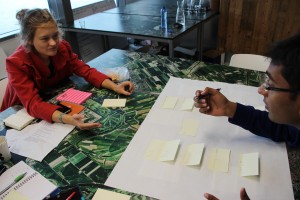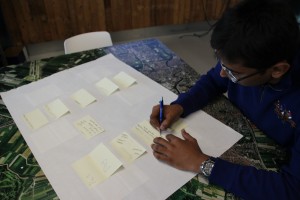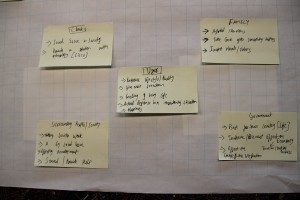 This morning we attended a workshop on problem definition by Charlie Mulholland who is a lecturer at the HvA. This was about determining the problem of our project and looking at the people and things that are involved. We started by picking our client, customer, user and initial problem statement. Our client, or partner, is Cisco since they are working together with us. The customer, who will buy the product can be a NGO, non profit organization, the government or women. This is due to the fact that we don’t know what we will be making yet. If we make an object that has to be bought by the women, then the women will be the customer. If the object is placed in the environment by the government, the government will be the customer. The user will be women in Amsterdam. The initial problem statement will be: How can we improve women’s safety in public spaces in Amsterdam?
This morning we attended a workshop on problem definition by Charlie Mulholland who is a lecturer at the HvA. This was about determining the problem of our project and looking at the people and things that are involved. We started by picking our client, customer, user and initial problem statement. Our client, or partner, is Cisco since they are working together with us. The customer, who will buy the product can be a NGO, non profit organization, the government or women. This is due to the fact that we don’t know what we will be making yet. If we make an object that has to be bought by the women, then the women will be the customer. If the object is placed in the environment by the government, the government will be the customer. The user will be women in Amsterdam. The initial problem statement will be: How can we improve women’s safety in public spaces in Amsterdam?
After this, we defined the various stakeholders. We did a brainstorm session on defining the stakeholders, which gave us some interesting insights. We came up with the following stakeholders: woman, technology organisations, family, surrounding people/society, government, security services, neighbour, children and a dog. During the next step was writing down the views of the various stakeholders. This meant that we checked how the stakeholders are involved in the problem. The family will, for example be interested in the problem since they are scared that their daughter will feel unsafe.
interesting insights. We came up with the following stakeholders: woman, technology organisations, family, surrounding people/society, government, security services, neighbour, children and a dog. During the next step was writing down the views of the various stakeholders. This meant that we checked how the stakeholders are involved in the problem. The family will, for example be interested in the problem since they are scared that their daughter will feel unsafe.
Eventually we did the 5w’s + 1h exercise. It started with Who, which would be the people involved. The What included what is happening which were comments, following, staring and physical harm. The Where was answered by public spaces in Amsterdam. For When, we chose times of day (night especially), drunk people at night (after a party) and early morning in the park. The why can be answered by the initial problem statement. The How can not be answered yet, but it could be a device, a change to the environment or something completely different.
 After the exercise, Charlie, explained more about the design process. It is all about iterating, iterating, iterating. He told us about induction and deduction. Also, he showed us a video which is very well known. (People throwing a ball. You have to count certain passes of the ball) The point of this video was that when you focus on a certain thing, your brain will not receive certain information anymore. Well, it will receive it, but will not process it.
After the exercise, Charlie, explained more about the design process. It is all about iterating, iterating, iterating. He told us about induction and deduction. Also, he showed us a video which is very well known. (People throwing a ball. You have to count certain passes of the ball) The point of this video was that when you focus on a certain thing, your brain will not receive certain information anymore. Well, it will receive it, but will not process it.
So if you look for an elephant, you will never spot the giraffes anymore.





